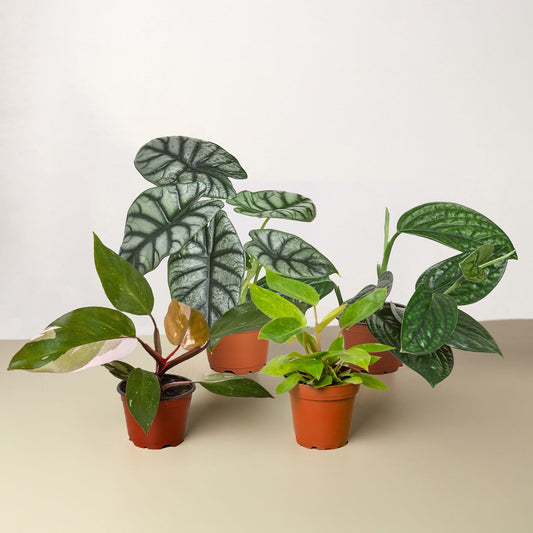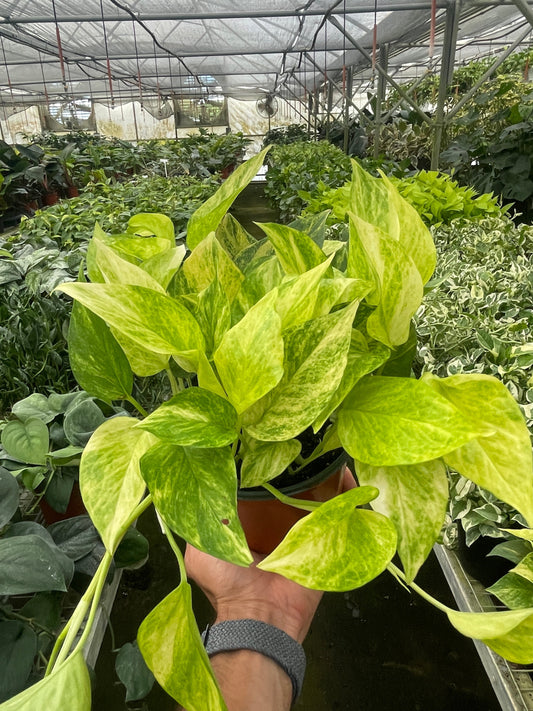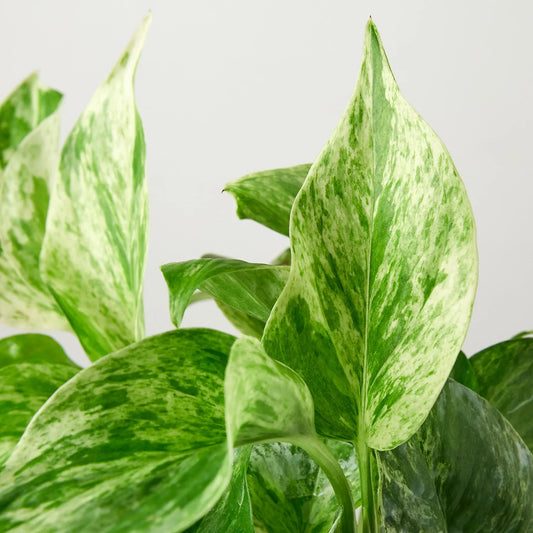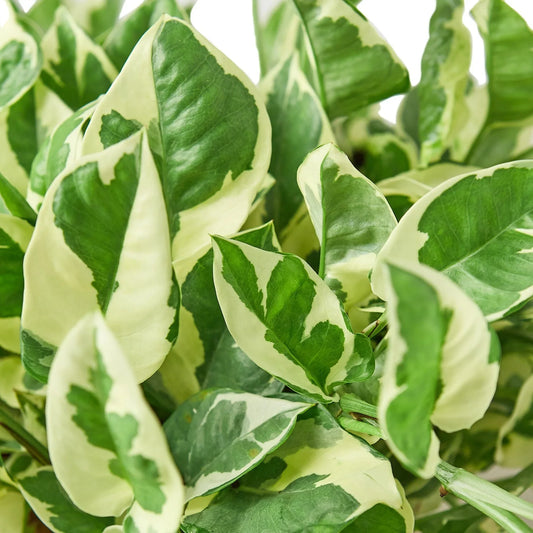Cactus Roots: Everything You Need To Know
Cafe Planta Team
Cacti might not be the first plants that come to mind when you think about nurturing greenery indoors, but they’re a fascinating group with unique features. One of the most overlooked aspects of these hardy plants is their root systems. These roots are not only critical for the plant's survival in harsh environments, but they also play a significant role in how you care for them at home.
In this post, we'll chat about everything you need to know about cactus roots. From their structure and function to practical tips on potting and care, I aim to make cactus care a bit less prickly for those of you looking to add some desert charm to your home. Let's get started!
Understanding Cactus Roots
Cactus roots are a marvel of adaptation. In the wild, they help these plants survive in some of the harshest conditions on Earth. But what makes them so special? Well, cactus roots are specifically adapted to maximize water absorption and storage. Unlike many other plants, cacti have shallow, widespread root systems. This allows them to quickly absorb any moisture from light rainfall, dew, or even humidity in the air.
The root structure can be broken down into two main types: fibrous roots and taproots. Fibrous roots spread out close to the surface, while taproots grow deeper into the soil. Most cacti you’ll find as houseplants have fibrous roots because they're cultivated to thrive in pots. Taproots are more common in larger cacti, like the iconic saguaro, which you'll likely encounter in their natural desert habitat rather than on your windowsill.
Interestingly, the roots will shrink and expand depending on the moisture content in the soil. During dry spells, they shrink to minimize exposure to dry soil, and when water becomes available, they swell to absorb as much as possible. Understanding these unique root features is the first step in keeping your cactus healthy and happy.
Potting Your Cactus
Potting a cactus might sound intimidating, but it’s pretty straightforward once you know the basics. Choosing the right pot and soil is crucial because these factors directly affect the root health of your cactus. Always opt for a pot with drainage holes. This helps prevent water from sitting at the bottom, which can lead to root rot—a common problem for cacti.
When it comes to soil, you need a mix that mimics the cactus's natural environment. A good cactus soil mix drains quickly and doesn’t retain moisture for too long. You can buy a ready-made cactus mix from garden centers or make your own by combining potting soil, sand, and perlite. This concoction helps keep the roots dry and airy, preventing the dreaded rot.
Here’s a simple step-by-step guide for potting your cactus:
- Choose the right pot: Ensure it has drainage holes and is slightly larger than the cactus's current pot.
- Add the soil mix: Fill the pot with your well-draining soil mix, leaving space for the cactus.
- Plant the cactus: Gently remove the cactus from its old pot, loosening the soil around the roots. Place it in the new pot, ensuring it’s at the same depth as before.
- Backfill and secure: Add more soil around the cactus, pressing gently to secure it.
- Water sparingly: Water the cactus lightly after a few days to allow the roots to settle.
Remember, potting is a bit of an art, so don’t worry if it takes a couple of tries to get it just right.
Watering Your Cactus
Watering is probably the trickiest part of cactus care. Since cacti are adapted to arid environments, they don't need frequent watering. However, when you do water them, it’s essential to do it thoroughly. The goal is to mimic the occasional downpour they’d receive in the wild.
Here's a simple rule of thumb: water your cactus when the soil is completely dry. How often this happens depends on various factors like temperature, humidity, and the size of your cactus. In general, during the growing season (spring and summer), you might water every two weeks, while in the dormant season (fall and winter), once a month might suffice.
Here are some tips to ensure your cactus gets the right amount of water:
- Test the soil: Stick your finger about an inch into the soil. If it feels dry, it’s time to water.
- Water thoroughly: Water until it runs out of the drainage holes, ensuring the entire root system is reached.
- Adjust for humidity: If you live in a humid area, you might need to water less frequently.
- Use the right water: Rainwater or distilled water is preferable if you have hard tap water, which can leave mineral deposits.
Over-watering is the most common mistake, but by keeping an eye on your cactus and adjusting your routine as needed, you can avoid this pitfall.
Dealing with Pests and Diseases
Even the hardiest cacti can fall prey to pests and diseases, which often target the roots. Common culprits include root rot and pests like mealybugs. Root rot is usually a result of over-watering, leading to mushy and discolored roots. If you notice a bad smell or your cactus looks unhealthy, it might be time to check the roots.
Here’s how you can tackle these issues:
- Root rot: Remove the cactus from its pot and trim away any rotten roots. Let the plant dry out for a day or two, then repot in fresh, dry soil.
- Mealybugs: These pests can be tackled with neem oil or insecticidal soap. Apply it to the affected areas, avoiding the roots unless absolutely necessary.
- Fungal infections: If you spot mold or fungus, allow the soil to dry out completely. You can also use a fungicide if the problem persists.
Regularly inspecting your cactus and its roots can help catch these issues early, preventing more significant damage down the line.
Choosing the Right Environment
Cacti thrive in environments that mimic their natural habitats. Bright, indirect light is ideal, although some cacti can handle direct sunlight. If your cactus is getting too much or too little light, it might start to show signs of stress, like discoloration or unusual growth patterns.
Temperature is another factor to consider. Cacti prefer warm conditions and can tolerate some temperature fluctuations. However, they’re not fans of frost or extreme cold. If you live in a cooler climate, consider bringing your cactus indoors during the winter months.
- Ideal location: Place your cactus near a south or east-facing window for ample light.
- Temperature range: Aim for temperatures between 65°F and 80°F (18°C to 27°C) during the day.
- Humidity levels: Cacti prefer low humidity, so avoid placing them in bathrooms or kitchens with high moisture levels.
Finding the right environment might require a bit of experimentation, but once you find that sweet spot, your cactus will thank you with healthy growth.
Repotting Your Cactus
Repotting is an essential part of cactus care. Over time, your cactus will outgrow its container, or the soil will become compacted, reducing drainage efficiency. Repotting gives your cactus a fresh start and encourages healthy root development.
When repotting, aim to do it every 2-3 years or when you notice the roots coming out of the drainage holes. Here’s a quick guide:
- Timing: The best time to repot is during the growing season, typically in spring or early summer.
- Prepare the new pot: Choose a pot that’s slightly larger than the current one, with adequate drainage.
- Remove the cactus: Gently remove the cactus from its pot, shaking off old soil and inspecting the roots.
- Prune if necessary: Trim any damaged or rotten roots with sterilized scissors.
- Replant: Place the cactus in the new pot, adding fresh soil around it. Water sparingly after a week to allow the roots to settle.
Repotting can seem daunting, but it’s an opportunity to inspect the roots and ensure they’re healthy and thriving.
Creating a Cactus Garden
If you’re feeling adventurous, consider creating a mini cactus garden. It’s a fun project that allows you to mix different cactus varieties and create a unique display. Choose a shallow, wide container to accommodate multiple plants and use a well-draining soil mix.
When arranging your cactus garden, consider the following:
- Variety: Mix different shapes, sizes, and colors for a visually appealing display.
- Spacing: Leave enough space between cacti to avoid overcrowding and allow for growth.
- Decorative elements: Add rocks, pebbles, or sand for a natural look.
- Lighting: Ensure the garden gets sufficient light, adjusting the position if needed.
Cactus gardens are not only beautiful but also relatively low-maintenance, making them perfect for busy plant lovers.
Cactus Roots and Interior Design
Cacti can be a striking addition to your interior design. Their unique shapes and textures add an element of intrigue and can complement various styles, from minimalist to bohemian. When incorporating cacti into your home, consider the following tips:
- Placement: Use cacti as focal points on shelves, coffee tables, or as part of a larger plant display.
- Containers: Choose pots that match your home's aesthetic, whether it’s sleek and modern or rustic and earthy.
- Grouping: Group different cacti together for a cohesive look, balancing taller plants with shorter ones.
- Lighting: Consider the lighting in each room to ensure your cacti get the right amount of sunlight.
Cacti can bring a touch of the desert into your home, and with a bit of creativity, they can become a stylish and functional part of your interior design.
Final Thoughts
Cactus roots are a fascinating subject, revealing much about these resilient plants and their care requirements. From understanding their root structure to mastering potting and watering techniques, there's always something new to learn about these spiky companions.
At Cafe Planta, we're passionate about helping you care for your plants. We offer a variety of houseplants and accessories, and we're always excited to answer your questions. Feel free to reach out via email or drop us a message on Instagram. Let's grow a beautiful collection together!



















